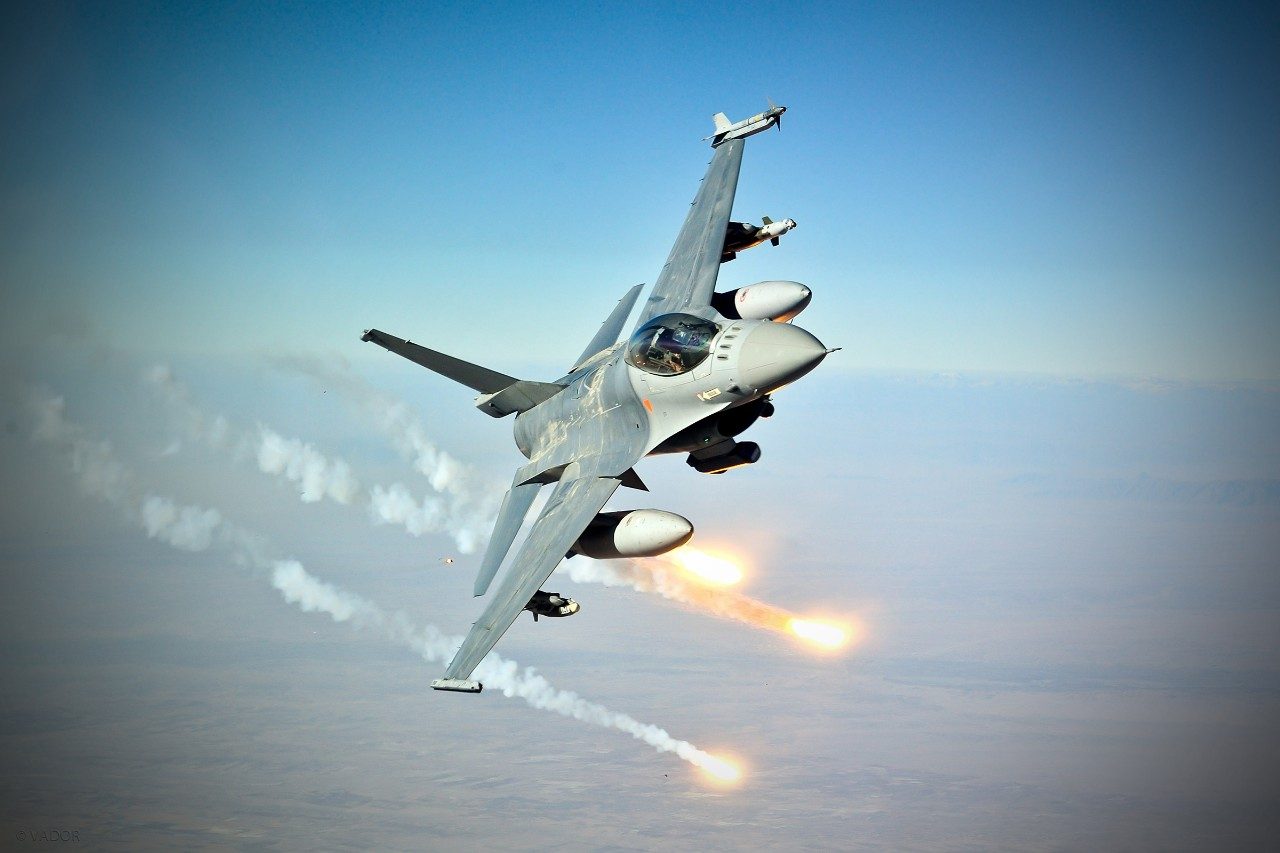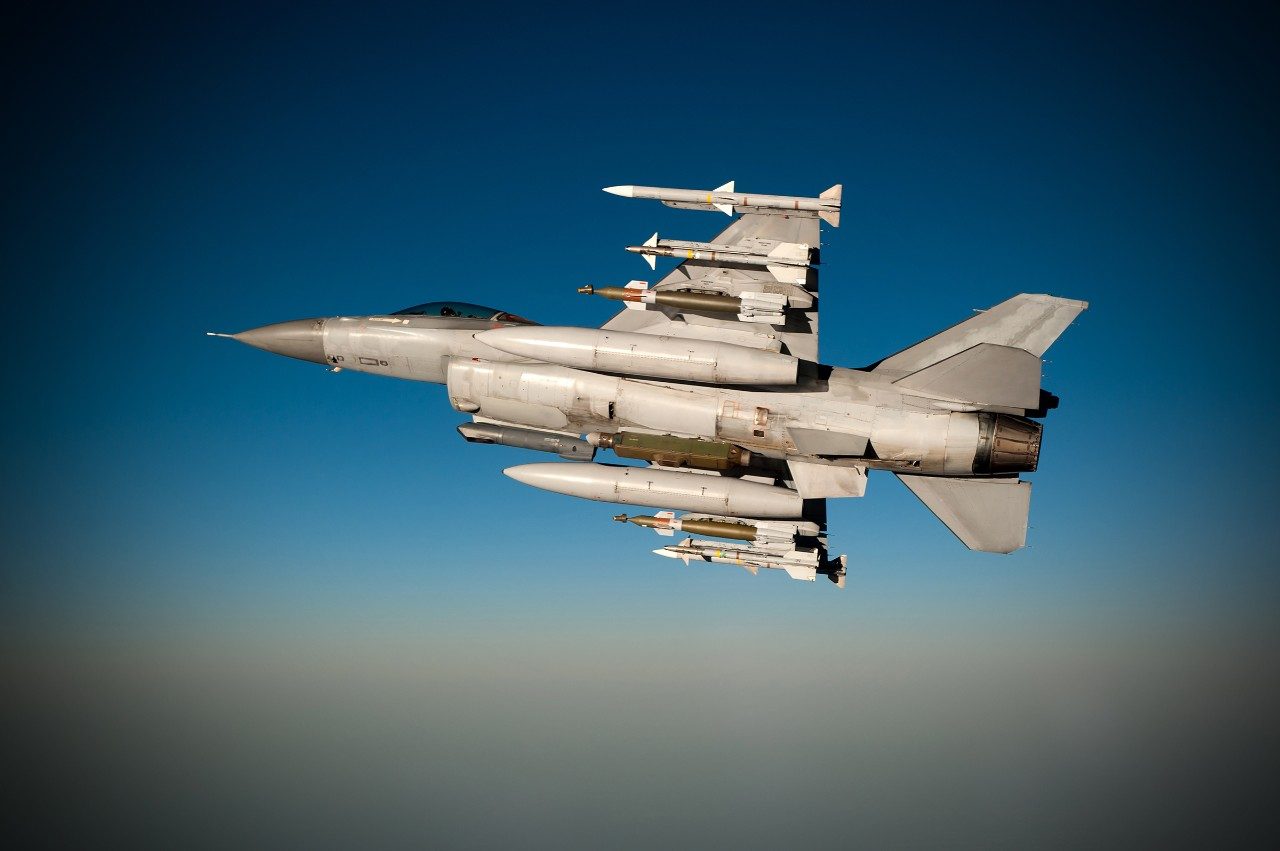Belgians’ Fighting Falcons Focus on ISR with Sniper Advanced Targeting Pod
Just minutes after Belgian Air Component pilot Davy flew his F-16 in a defensive mission to support coalition troops receiving opposing fire, the joint terminal attack controller’s voice rings out over the radio:
“Sierra 05, this is Whiskey 11. We just received intel that insurgents are making home-made explosives for use in vehicle-born IEDs. Before returning to base, could you sweep the village of interest?”
It’s a simple request, but one the Belgian Air Component couldn’t fulfill without F-16 Fighting Falcons and Sniper® Advanced Targeting Pods (ATPs).
“In today’s non-traditional nature of insurgent conflict, characterized by constantly changing combat situations with poor information on enemy locations and capabilities, near-real-time intelligence, surveillance and reconnaissance is necessary to successfully deal with the threat,” Davy said. “Having the right equipment to perform multi-role missions in these kinds of theaters has proven invaluable to the success and survival of coalition forces.”
Like many air forces during the post-Vietnam and pre-9/11 era, the Belgian Air Component operated separate squadrons for air-to-ground and air-to-air defensive missions. Discrete squadrons focused solely on ISR missions, often referred to as “recce.” Pilots were trained to execute a single type of mission, and crossover was infrequent. Though recce was necessary, it often required too many resources or was too complex to be accomplished effectively as single missions.
“The old way of performing recce was not easy to do,” said pilot Tanguy, who flew the old recce system. “You’d need one aircraft doing recce and a second aircraft next to it to defend the first, which means that you are doubling the aircrafts needed for a single mission.”
Because recce missions were performed with a podded system that was relegated to the aircraft centerline or a bomb bay on the wing, pilots risked giving up weapons, fuel or jammers to fly with these recce pods. Capabilities of the equipment and interactivity with the pilot were also limited - further decreasing the ability to gather usable information.
“The only thing a pilot could decide from the cockpit was to turn the recce pod camera on or off or to turn it to a limited set of predefined angles,” Tanguy said. “The camera was always looking either down to the ground or to the side of the aircraft, so the only way you could aim with it was by flying your aircraft straight and level and pointing the pod to the target.”
This left pilots vulnerable to attack from ground opponents. Attempting recce while engaging in combat operations was impossible – the moment the aircraft turned or changed altitude, the cameras in the recce pod were no longer at the correct angles to collect information on specific targets. In totality, the impacts of flying recce-only missions with recce pods were often troublesome and costly.
With F-16 multi-role fighters already in the Belgian fleet and advanced systems easily integrated to add flexibility, the strategy of executing single-focus missions was losing popularity. Limited budget and limited time required pilots to perform multi-faceted missions to stretch defense dollars and maximize flight time. In the 2000s, the Belgian Air Component mandated that all fighter pilots become proficient in the Air-to-Air and Air-to-Ground role. As they upgraded their F-16s, military leaders also found the necessity for pilots to use the capabilities of their aircraft and integrated products to not only attack and defend but also to support ISR efforts. The pairing of Lockheed Martin’s F-16 and Sniper ATP gave the Belgian fleet the capability to perform recce effectively without them initially even realizing it.
Looking for smooth integration for targeting and laser designation with their upgraded F-16s, and with Sniper ATP being offered to replace their LANTIRN targeting pods, the Belgian Air Component purchased Sniper ATP. Though recce capabilities didn’t factor into the decision, and the Belgians weren’t ready to give up their old recce pods, their strategy was to see what Sniper ATP could do when tasked with recce missions.
Sniper ATP’s high-resolution imagery and ability to see detail from great altitudes for targeting was just the capability upon which the Belgians felt they could expand for recce.

From a targeting standpoint, Sniper ATP had all the right features: superior detection range, laser spotting and tracking, and continuous stabilization for high-resolution imagery. Regarding non-traditional ISR, the high-resolution imagery that Sniper ATP provided and ease with which pilots could manipulate the angle of the pod optics to get the best images made Sniper ATP a clear choice and an overall best value. As the F-16s screamed off the runways with Sniper ATPs under the nose, it was clear that their old pods would shortly be a thing of the past.
“The integration of Sniper on the F-16 is just amazing,” Davy said. “The intuitive interface makes it easy to use Sniper in the most effective way from real-time protection of coalition forces to weapon delivery or specific ISR tasks.”
To perform their current support role flying ISR missions for the coalition in Kandahar, Afghanistan, the Belgian Air Component sees themselves at a loss without Sniper ATP.
“The Belgian Air Component has expanded its weapon arsenal to precision guided munitions. These require up-to-date sensors to confirm the target identification at high altitude, and provide accurate information to guide the bombs. The Sniper Pod does it all,” said the Chief of Air Operations. “For us, the Sniper is not a nice-to-have feature, but a must-have. Fortunately, the reliability of the Sniper allows us to plan for success and execute operational missions with a high level of professionalism.”
The benefits of Sniper ATP are many, and the Belgians point to them frequently. Sniper ATP’s pointing accuracy and high-resolution imagery in the TV and infrared spectrum allow collection of recce images from altitudes far outside jet-noise range. Also, by using a podded system, upgrades and development are done independently from the aircraft, so increasing capability simply requires updating the pod without needing to change the F-16 airframe or avionics.
“Sniper’s digital data recorder is also a big advantage for us because not only does the digital data recorder allow video datalink directly to our ground troops, but it also cuts image processing time almost in half, with imagery immediately available for analysis without post processing after engine shut down,” Davy said. “This means that we can act on ISR information faster than ever before.”
Since their time in theater using Sniper ATP, the Belgian Air Force performed ISR missions during almost 50 percent of the F-16 missions with a success rate of close to 100 percent.
“The ability to have a weapon system that combines the capabilities of air-to-ground, air-to-air and recce with close pilot interaction allows for more successful missions,” Davy said. “And recce is only an add-on to the Sniper targeting capabilities. The great precision of the Sniper allowed us to collect target coordinates to employ GPS-guided munition, giving us an all-weather capability.”
Between the F-16 and Sniper ATP, the Belgians have seen first-hand Lockheed Martin’s commitment to listening to customers’ needs to ensure that warfighters can complete their missions.
“This is one of the programs that we can use as an example to our colleagues of how a company and a defense organization can find the exact right compromise,” said Lt. Col. Frank Vandenbussche, head of the F-16 Material Management. “It shows that you can do more and both parties can win if you work together rather than fight each other.”

Development of Sniper ATP’s ground tools, called Global Scope™, used to analyze imagery, also shows the committed partnership between Lockheed Martin and the Belgian Air Component. In time-critical situations, such as locating the position of an improvised explosive device or a missile launch site, just a few minutes can make the difference between eliminating the target or reacting to an attack. The speed and user-friendly interface of the developing tools continue to help the Belgian Air Component accomplish their missions more efficiently, buying needed time in critical situations.
“We wanted to be able to do more than what we did with the old recce pod, and at that moment Lockheed Martin came in with Global Scope,” added Vandenbussche. “They put the engineering tools, used to support the recce features of Sniper during the development phase of this capability, completely aside and at the same time, integrated additional capabilities that we didn’t have on the old pod. The capabilities were designed by people using the pod in the field, and that’s how Global Scope started evolving. It really showed that Lockheed Martin started from the requirements of the people in the field who do this task - how to make their lives easy and produce what they need to do their jobs.”
The Belgian Air Component will continue to play a critical role in NATO’s air operations, and Commander Lieutenant General Claude Van de Voorde sees the F-16 and Sniper ATP continuing as their mainstay.
“Sniper is a state-of-the-art, combat-proven targeting pod,” Van de Voorde said. “With the added recce features, we employ a fully integrated low-drag, all-in-one sensor. Our pilots can execute any recce tasking and be immediately re-tasked if needed to support troops on the ground with effective and accurate firepower. There is no doubt that Sniper brings us the best of both recce and precision targeting capabilities in one.”
Sniper is a Registered Trademark of Lockheed Martin Corporation; GLOBAL SCOPE is a trademark of Lockheed Martin Corporation. All Rights Reserved.
September 10, 2015




